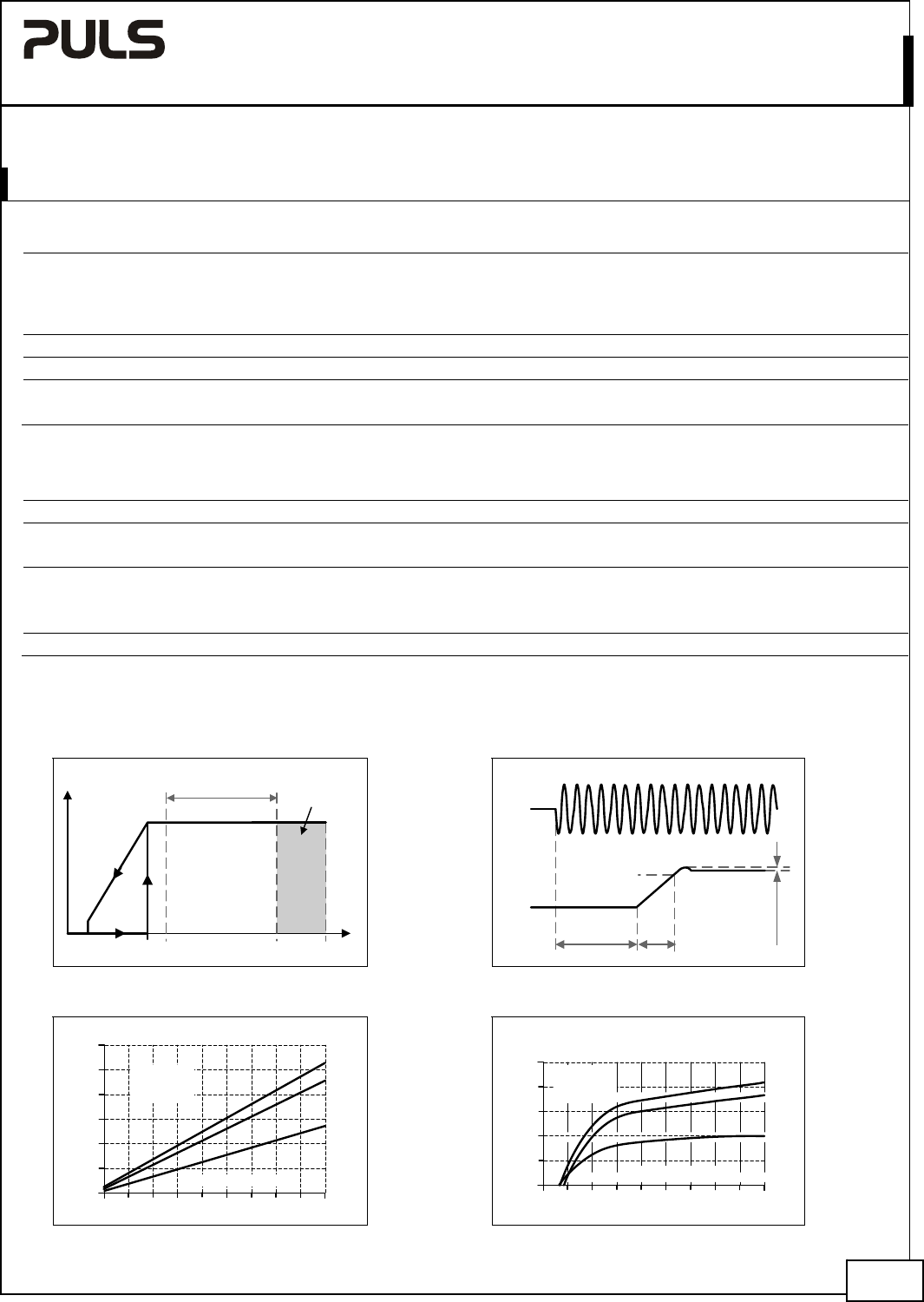Datasheet
Table Of Contents
- 1. Intended Use
- 2. Installation Requirements
- 3. AC-Input
- 4. Input Inrush Current
- 5. Output
- 6. Hold-up Time
- 7. DC-Input
- 8. Efficiency and Power Losses
- 9. Functional Diagram
- 10. Front Side and User Elements
- 11. Terminals and Wiring
- 12. Lifetime Expectancy and MTBF
- 13. EMC
- 14. Environment
- 15. Protection Features
- 16. Safety Features
- 17. Dielectric Strength
- 18. Approvals
- 19. RoHS, REACH and Other Fulfilled Standards
- 20. Physical Dimensions and Weight
- 21. Accessory
- 22. Application Notes
- 22.1. Peak Current Capability
- 22.2. Back-feeding Loads
- 22.3. Charging of Batteries
- 22.4. External Input Protection
- Parallel Use to Increase Output Power
- Parallel Use for Redundancy
- 22.7. Daisy Chaining of Outputs
- 22.8. Inductive and Capacitive Loads
- Series Operation
- Operation on Two Phases
- 22.11. Use Without PE on the Input
- 22.12. Use in a Tightly Sealed Enclosure
- 22.13. Mounting Orientations

ML60.121
MiniLine-2
12V, 4.5A, SINGLE PHASE INPUT
3. AC-INPUT
AC input nom. AC 100-240V -15% / +10%, TN/TT/IT-mains
AC input range
85-264Vac continuous operation,
see Fig. 3-3 for de-rating requirements for AC 100V
mains.
264–300Vac < 0.5s
Allowed voltage L or N to earth max. 264Vac or 375Vdc
Input frequency nom. 50–60Hz ±6%
Turn-on voltage typ. 65Vac
Shut-down voltage typ. see Fig. 3-1
AC 100V AC 120V AC 230V
Input current (rms) typ. 1.06A 0.91A 0.54A at 12V, 4.5A see Fig. 3-3
Power factor *) typ. 0.61 0.58 0.50 at 12V, 4.5A see Fig. 3-4
Crest factor **) typ. 3.2 3.3 3.7 at 12V, 4.5A
Start-up delay typ. 120ms ***) 100ms ***) 90ms see Fig. 3-2
Rise time typ. 40ms 40ms 50ms at 12V, 4.5A, 0mF, see Fig. 3-2
100ms 90ms 110ms at 12V, 4.5A, 4.5mF
Turn-on overshoot max. 200mV 200mV 200mV see Fig. 3-2
*) The power factor is the ratio of the true (or real) power to the apparent power in an AC circuit.
**) The crest factor is the mathematical ratio of the peak value to RMS value of the input current waveform.
***) At low temperatures, start-up attempts may occur which extends the start-up delay time.
Fig. 3-1 Input voltage range Fig. 3-2 Turn-on behavior, definitions
85
Rated
input range
max.
500ms
V
IN
V
OUT
4/23
300Vac26465
Start-up
delay
Rise
Time
Overshoot
- 5%
Output
Voltage
Input
Voltage
Fig. 3-3 Input current vs. output load at 12V Fig. 3-4 Power factor vs. output load at 12V
4.5A
130
0
0.4
1.2A
Input Current, typ.
4
0.8
1.0
0.6
2
0.2
b
c
a
4.5A
012 4
0.40
0.45
0.50
0.55
0.60
0.65
Power Factor, typ.
b
c
a
Output Current
1.5 2.5 3.50.5
a) 100Vac
b) 120Vac
c) 230Vac
a) 100Vac
b) 120Vac
c) 230Vac
3
Output Current
3.52.51.50.5
Nov. 2015 / Rev. 1.4 DS--ML60.121-EN
All parameters are specified at 12V, 4.5A, 230Vac 50Hz input, 25°C ambient and after a 5 minutes run-in time unless otherwise noted.
www.pulspower.com Phone +49 89 9278 0 Germany










